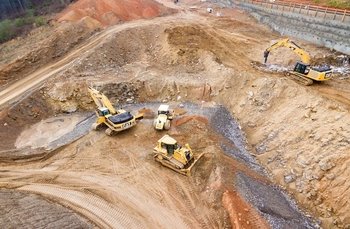
A lot of companies are searching on a global level for mineral deposits that can be processed economically. There are plenty of different techniques and activities that could be used for mineral exploration that is being used for potential discoveries. There are three main technique groups and we are going to cover them all today for you, so let's start!
The geological technique can provide crucial clues of a potential discovery on the surface, starting with the rock sampling and trenching, all the way to the geological mapping.
Mapping is generally prebuilt on existing maps. Using this technique, geologists will spend time in the field, observing mineral showing and rocks, after which they will record their studies to be able later on to create maps of high quality on a small scale.
Stripping includes removing a small amount of dirt from the surface of the rock while trenching is used for blasting or digging to get inside the rock in order to be able to expose a perpendicular mineralization section.
This technique is used for deep chemical analysis of the material, from soil and rocks to the vegetation sediment inside the rivers and lakes.
During the process of mapping, geology teams will gather rocks and start evaluating the surface mineralization, later on it will be documented and assayed in order to increase the knowledge of the gathered property.
Pieces of rocks that consist highest degree of visible mineralization are being randomly gathered and therefore metal concentrations found in them are shouldn't be taken as a real representation of the overall potential of the found property. The "Grab" samples are simply serving as pointers on the road to define the further work.
Chipped samples can provide grades and information about the width of a potential mineralization found on rock. A sample taken from composite rock that has been made by chipping the fragments with the single goal to accumulate the equal size of the rock and its mineral exposure.
These methods are a set of analytical techniques, and they are the best for defining the physical properties of all the types of rocks and minerals. Geophysical methods are including:
Once a mine starts with the production, exploration activities could continue, furthermore, to define the deposit more precisely and possibly extend its life. By performing further exploration, it could even identify the opportunities outside of the mining area that are being located along the same geological belt.